rules for small groups : 3 must-haves for first graders
Are you ready to start literacy centers in your classroom but wondering if you need rules for small groups?
The answer is yes! Your students need to know the expectations for small group rules. Rules and expectations are especially important during literacy center time because most of the work will be completed in a small group or independently.
Small group rules and expectations are created with your students to make a strong classroom community and provide students with structure.
In this post, I am going to share the top 3 must-haves for creating rules for small groups.
Want a deeper dive into running and managing literacy centers? Check out How to Run Literacy Centers Like a Pro! It is the step-by-step guide you need to plan your groups, schedule literacy centers, and more! Grab your freebie here!!
Large Group vs Small Group
Literacy centers are a time for students to practice skills that have already been taught, get used to working independently, and work with the teacher in a small group setting.
Literacy centers are not the time for whole/large group instruction or learning something new.
You want students to be successful, and for that, it’s best to have them work on skills that have already been taught. This way they can be independent, build mastery, and won’t be interrupting your group at the teacher table. 🤣
Small Group Rules for Students
One of the most important things to think about when creating any rules or expectations is your students’ involvement.
Your classroom is a community and your students are a part of that community. They should be involved in making the rules as well.
I like to create guided rules, where I steer the kids towards the rule I am thinking of. Your students will most likely come up with similar rules to what you are thinking. I help my students by fine-tuning or summing up their ideas into classroom expectations.
You will have a much higher buy-in rate if your students think they are the ones that created the rules for small groups. Allowing them to feel ownership over their classroom community is huge for a positive classroom environment!
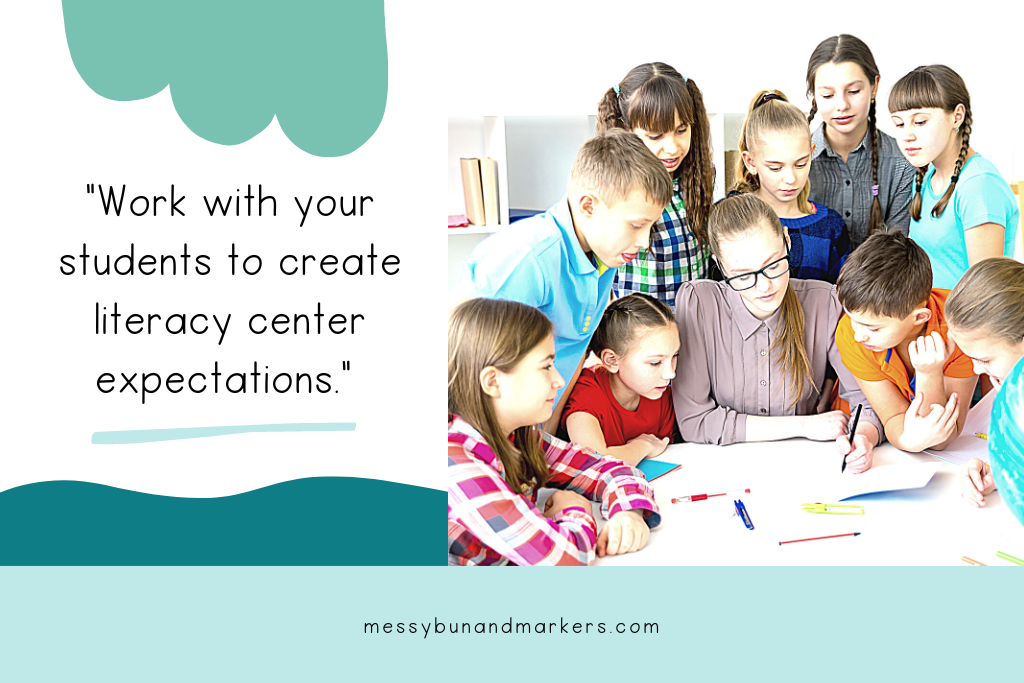
Small Group Instruction Transitions
Transitions during your small group instruction can sometimes get a little crazy! But I have some tips that will help ease the transition craze in your first grade classroom.
I love using a timer for my transitions. Students can see how much time is left during a center and know that they need to clean up when the timer buzzes.
I like to do two 20-minute literacy centers a day. This means that students transition to a new literacy center after 20 minutes. When my students hear the timer go off they quietly clean up their literacy center and head to their next literacy center.
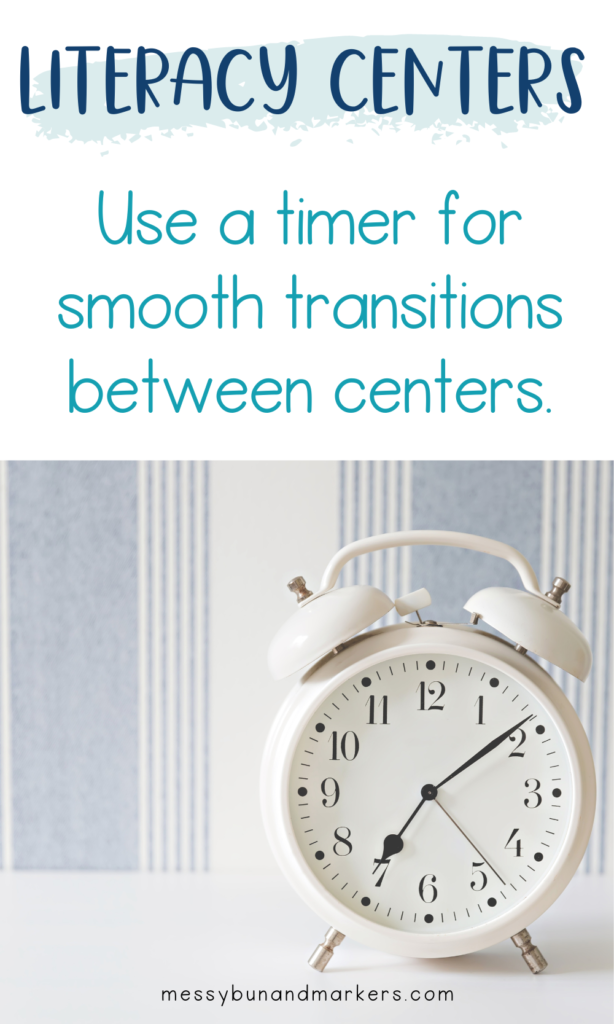
I find that having a literacy center schedule visible for all students really helps with transitions. My students know to look at the schedule and head to their next stations without asking me where they should be going.
Small Group Rules for Materials
Students have a lot of materials for literacy centers. I love to use student book bins. They keep all their books, folders, and papers in one spot! Read more about how I use bins in the classroom here!
Keeping my students organized is always my goal. So, in their book bins, they keep their Ketchup Folders. These folders have been a game-changer for keeping students on task.
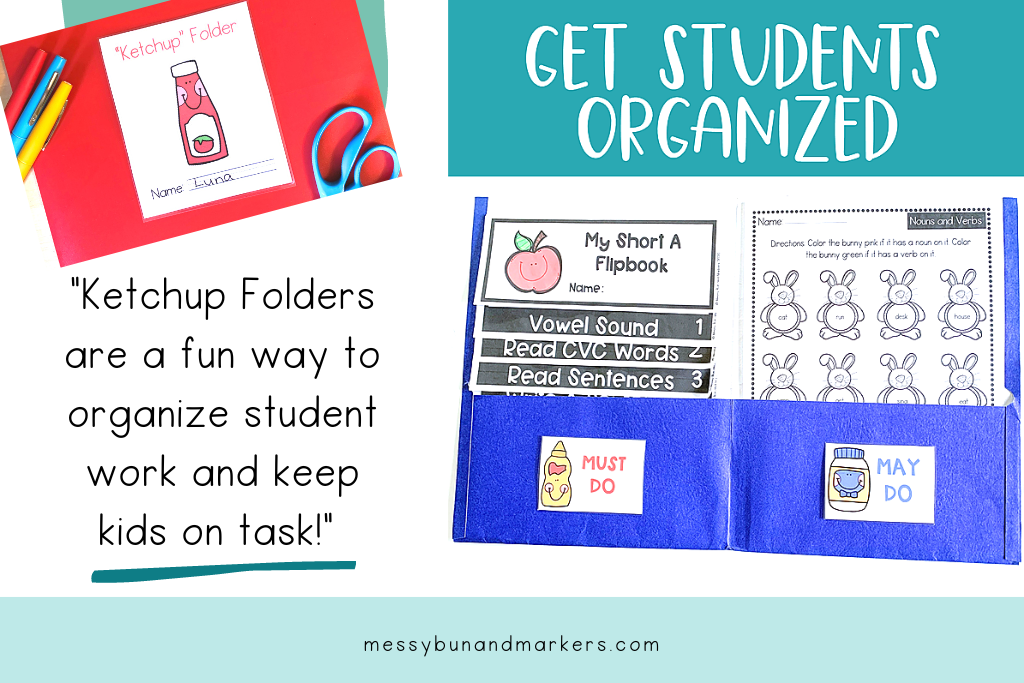
Students know what they “Must-Do” and “May-Do” inside their Ketchup Folders. It makes completing independent work so much easier!! I have an entire post on how to use Ketchup Folder Labels here!
Or grab Ketchup Folders for your classroom today! You’ll love how quickly they can organize your student work!!
Be Consistent with Rules for Small Groups
Consistency is important in all parts of your classroom management strategy, but especially so during literacy centers.
Your students are mostly completing independent work during small group instruction, and you want them to be successful doing so.
If the rule is that only students who are doing Read-to-Self can use a stuffed animal, then stick to it! If you give in and let a student who is not doing Read-to-Self hold a stuffed buddy, even if it’s just once, your students will push back on the rules that they helped to create in the first place.
Review your rules each day. Remind your students that these rules are not here to prevent them from doing things, but so that they can focus on what needs to be done and thrive during literacy centers.
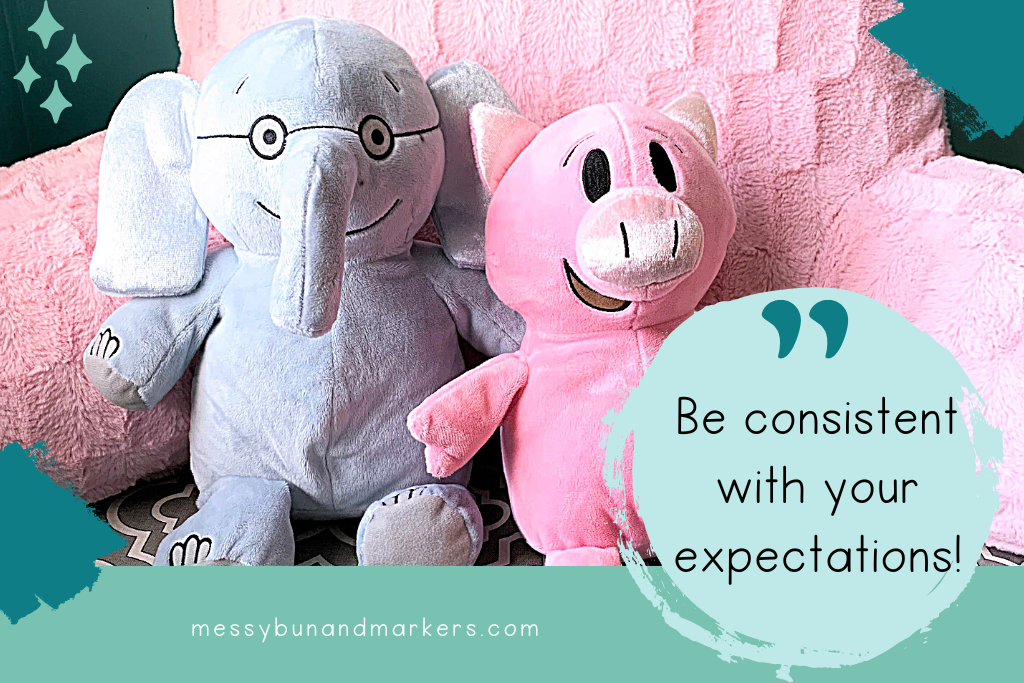
Group Rules for Small Groups
So, what rules do I create with my students?
Here are some sample rules that my students go over each time we have literacy centers.
- Get started right away and keep working the whole time
- Find a just-right spot to work
- Ask 3 before me
For each center, students need certain materials. These materials are in specific spots in the classroom. If a student is doing Read-to-Self, they will need their book bin (which has books they can decode and high-interest picture books) possibly a whisper phone or stuffed animal buddy.
Knowing what materials to get and where to get their materials are key to getting started right away.
Finding a just-right spot can look different for each student. If they are working as a small group you will want to assign an area for them to be, like the library rug. Otherwise, you can have students work around the room or at their desks.
It doesn’t matter where they sit, but they must be working and not close enough to bother anyone!
Asking ‘3 before me’ is a general classroom rule as well. What this means is that if a student doesn’t know what they should be doing they need to ask 3 friends before they come to me. This is because I am working on a lesson with a small group at the teacher table, and keeping interruptions to a minimum is best!
Small Group Rules for the Teacher Table
When students come to work with you at the teacher table you will want to have a few rules too.
I keep it short and simple and have a small poster that says…
In this group we are, kind and respectful, actively listen and participate, come ready to work, and try out best!
My students recite this before we begin our lesson for the day!
Make sure you download How to Run Literacy Centers Like a Pro for a detailed guide on how to create a schedule that works for you!
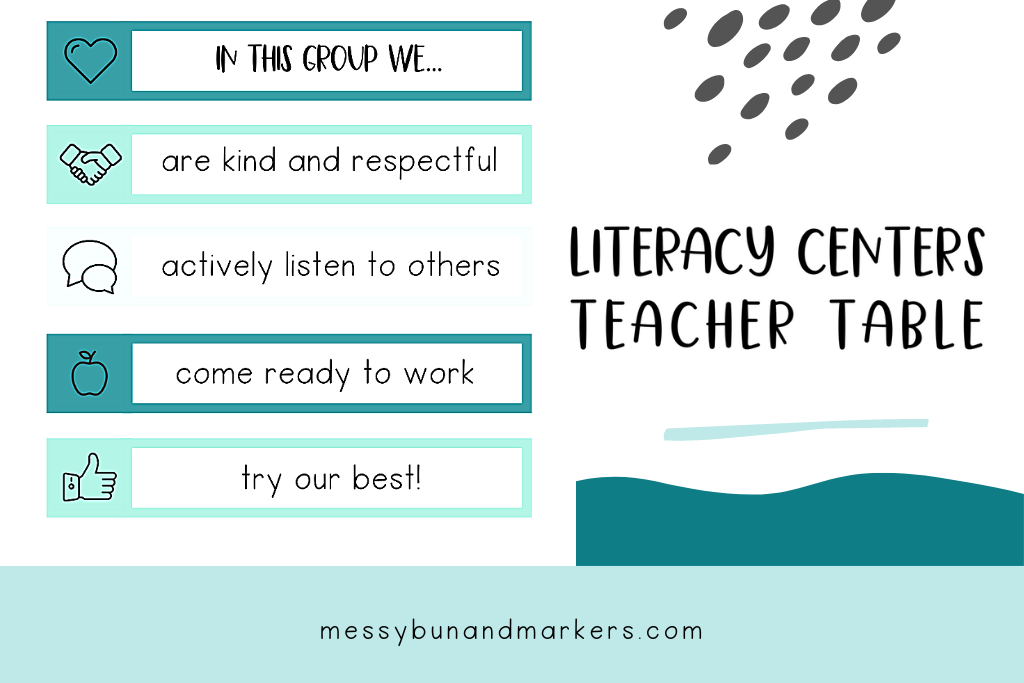
Rules for small groups instruction
Develop rules and routines. As a group, create expectations for literacy centers. Write what you will be doing and what your students will be doing. Creating expectations as a group helps students to feel ownership over the rules.
Literacy centers/ independent work can be a challenge for many kids. Your students will need to build up their stamina for working by themselves. Make sure that you ease into literacy centers at the beginning of the year. Start with fewer types of centers and a shorter amount of time.
After a few weeks, you will be so impressed by how well your students can complete literacy centers and how they can work the whole time!

Closing
Creating rules for small groups doesn’t have to be hard! Stick with these 3 must-haves to create thriving classroom literacy centers!
- Develop your expectations together
- Plan for transitions
- Be consistent with expectations
Still have literacy center questions? I am here to answer any questions you might have, so leave a comment!!
So, are you ready to create rules for small groups in your classroom? I believe in you, teacher friend! And don’t forget to grab How to Run Literacy Centers like a Pro!
You are going to rock literacy centers this year!!
Happy Reading!


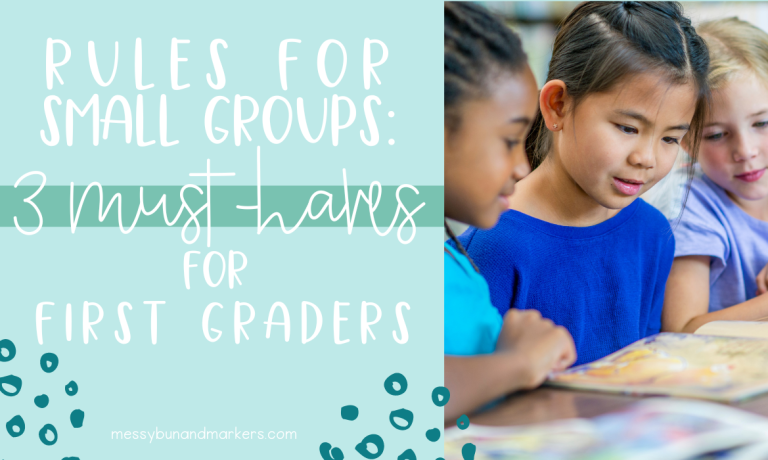

One Response
Thanks again!